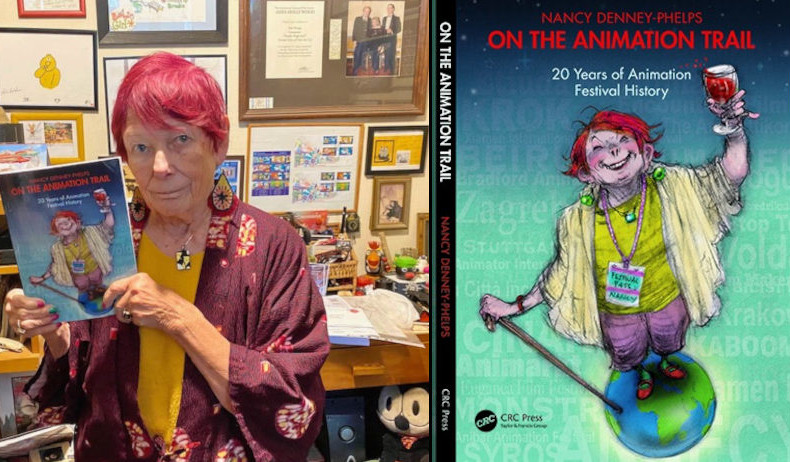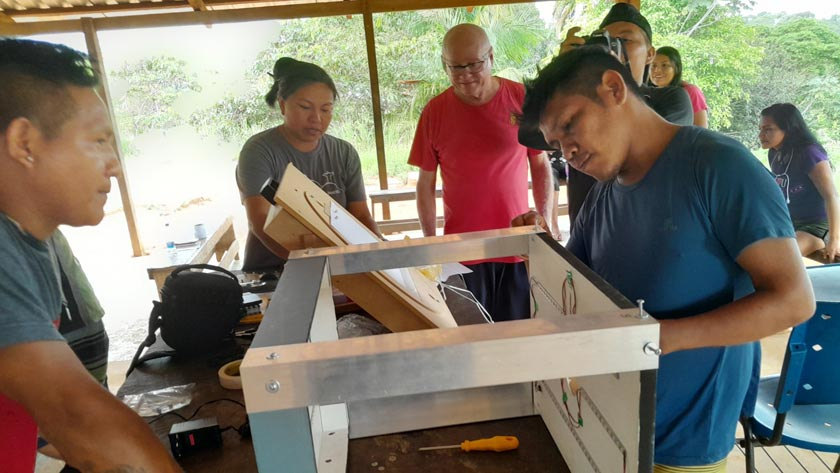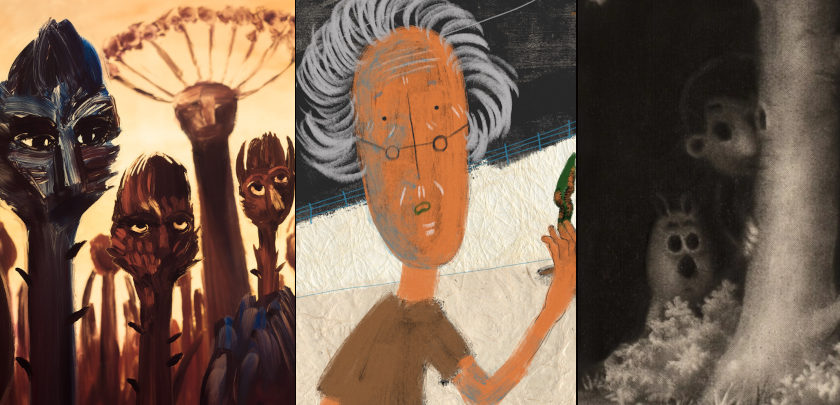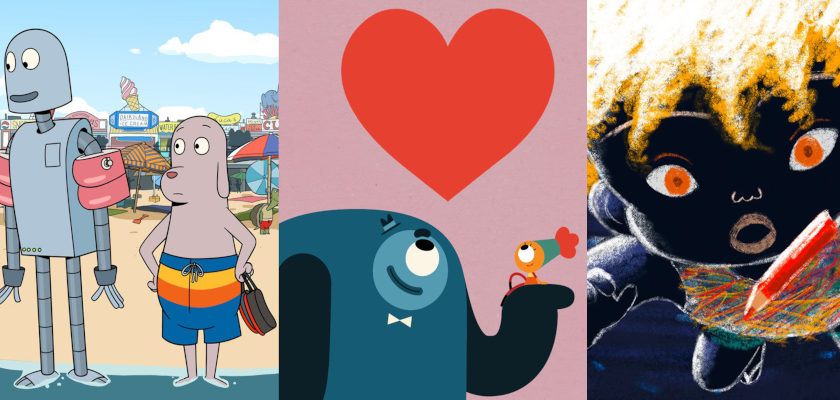Lulina and the Moon Brazilian Animation Short: The Childhood World
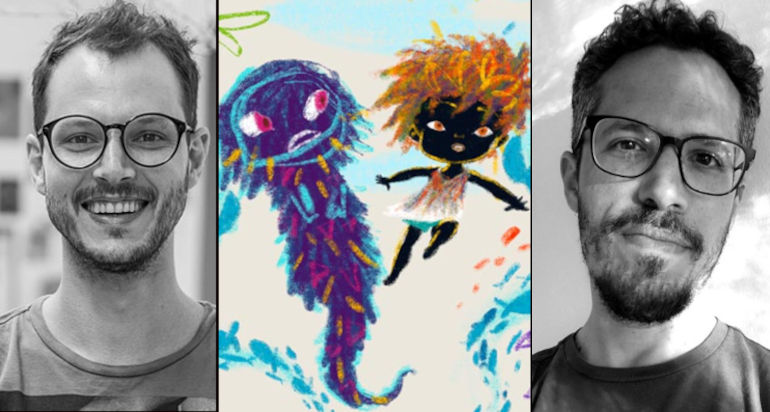
'Lulina and the Moon' (Lulina e a Lua) (Alois Di Leo & Marcus Vinicius Vasconcelos, 2023) is a kind of animation short that enchants the audience. The short is aimed at children and has a very rich message and arresting aesthetic visuals. It was screened at the Monstra Festival 2024, besides the Chicago International Children’s Film Festival, the Clermont-Ferrand International Short Film Festival, and the International Short Film Festival Oberhausen.
Lulina draws her greatest fears over the infinite white floor of the Moon. Magically, her illustrations come to life and teach her that her problems aren't as monstrous as her imagination painted them - Film Synopsis.
I had the opportunity to talk to one of its directors, Marcus Vinicius at Monstra, and bring this conversation to our Zippy Frames readers.
Marcus is a partner and founder of Teremim Studio, a 2D animation company based in São Paulo, Brazil, where he works as an animator, screenwriter, director, and producer. Marcus has collaborated on several projects, such as 'The Boy and the World' (2013). Nowadays, he is finishing his Master's degree at Re:Anima, the European Joint Master in Animation, in Portugal.
So, let's go to the interview!
ZF: Marcus, first of all, I need to observe that for me, your short is very touching—this story is about a little girl who has to face a new brother. So, I would like to ask you to tell us how this idea was born.
MVV: The original idea was born from the possibility of a child going to the moon to draw as if the moon were the floor of an infinite white sheet. From this idea, we started to develop a series' project which we presented at MIFA Pitches 2015. For several reasons, the series project never happened, but it survived and was developed with Ancine's resources.
In the project development, we thought of a feature-length possibility and a short one. So, in the short film, it is the story of this girl who goes to the moon to draw, in principle. But for the narrative development of a short film, which needed a force, a conflict that would move the story, we researched and thought a lot about what conflict could be genuinely childish. Because when we see a children's film, it's always a parent who dies — and we didn't want to think in any way about a conflict that would torture the child. We wanted it to be a conflict that the child lived, and that was big enough to move her emotionally, but it didn't have to be something from another world.
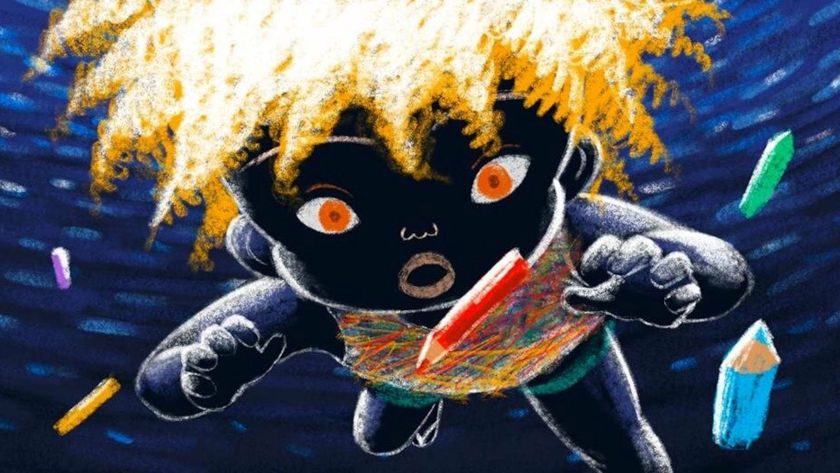
On the other hand, we decided that she would be a black character. In the development of the script, we worked with black screenwriters, and the question was to run away from the common belief that black characters have social issues linked to them. Then, we needed to create narratives with black characters that have "normal" possibilities.
Then the idea of this only daughter came up. Which, in principle, seems very cool to have a brother, but when the time comes, she sees that it is a problem. I think it's born from there, and then she goes to the moon in an escape movement, right? To run away from this place where she no longer feels loved. But, deep down, she finds, on the moon, this possibility to express what she's feeling. So, it's a little bit like that.
ZF: It's funny that the moon, in mythologies and ancient civilizations, is always linked to the question of the mother of the family.
MVV: Yeah. It's a project that we later got inspired by Brazilian issues, but we're always trying to run away from this more commonplace. So, there's an idea that Lulina lives in a Caiçara [Kaissara] village (fishing communities of the Brazilian Southeast), and a whole imaginary issue of the Fandango, which is an artistic and musical manifestation, especially typical of this country’s region. That is also related to the question of religiosity, as the monster she creates is a little dragon, from a devout family in São Jorge [Saint George]. This is right in the middle of this narrative, but in the long run, we open up a lot more about these issues...
ZF: There is time for it.
MVV: Yes. Then we bring the relationship of São Jorge with the Afro-Brazilian religiosity, the candomblé; therefore, the imaginary element is getting richer.
ZF: From which state in Brazil are you, Marcus?
MVV: I'm from São Paulo, like the producer but I am living in Santos.
ZF: Interesting since for me the short aesthetic brings something from the Northeast region.
MVV: I agree, but it's Caymmi’s influence, right? When we said beach, go to the moon, the first musical references came were Dorival Caymmi [a great musician from Brazil's Northeast] and TV soap operas. Although, when I visited a village in the south of São Paulo, I met a “real” Lulina. This girl lived there freely, and the community took care of her because it's a very family-oriented community.
ZF: So, the idea came first, or the girl came first?
MVV: The idea came first. I met this kid many years later. But the depth we find in the short and the feature film was born from having met Lulina on Cardoso Island. And she is Lulina, a free girl, in a place where it's still very safe, in this sense of urban violence. So, I remember I was sleeping. I didn't call her Lulina, but Lulina appeared in my room in the morning! So, I was inquisitive about this freedom and this very intense relationship with nature. So, the inspiration is from this region.
ZF: And the aesthetic question: how did you find this aesthetic so colorful—black making so much contrast—because black actually values color?
MVV: I think there was a long way; I think everything was born, including the conflict, from an idea of a valuation of childhood and its poetics. So, this thing of the childish drawing, the childish conflict, and the childish way of looking is a desire to ennoble this moment of life as a vibrant moment, it is a giant moment in the human phase, right? Thus, it's not something that will happen someday (when we become adults); but it already is.
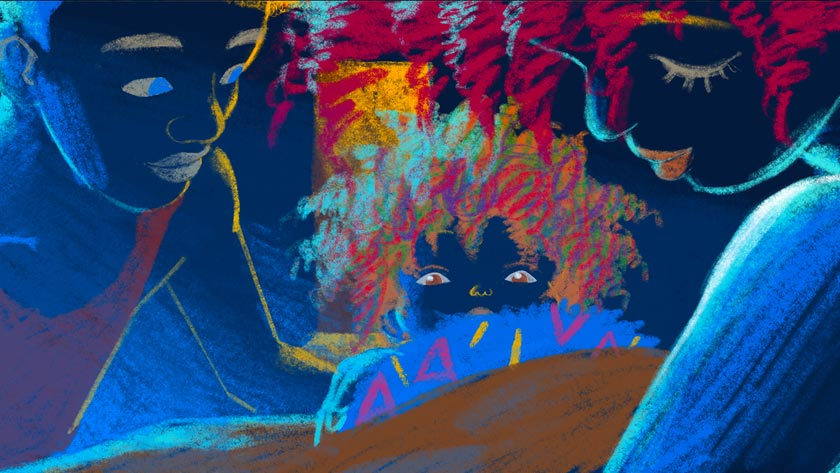
I started to develop this series, along with other co-creators; it's a very co-created job. Somehow, I've been there since the beginning, and during the process, I had a child. So, I took several different moments, and that changed the way I looked at the film.
Moreover, in this conflict with the brother, it's born a little at this moment that the child is aware that she is a separate being from the family. She is herself. And this awareness of herself, of the other, of what love is, of what the relationship is, is also induced by a call to consciousness.
You asked about the visual issue: since the series' development, the idea was that the moon was the possibility of expression as the child expresses herself. The two-dimensional nature and the sense that spaces don't follow realistic logic mean that it is an expression many times more of emotion than representation. And we were pulling this to many places. The moment that I got to the art director (Shun Izumi), I said, “I wish it was done with pencil.” The idea is that we don't have a difference between what is on Earth and what Lulina draws on the moon. So, in the end, we have to have doubts about whether it was Lulina who drew this whole movie at some point in her life.
Of course, in the moon's sequence, she has a more childish trace, but deep down, Lulina is all colored, with hair that looks like done with a multicolored pencil. I intended to create the feeling that she could have drawn herself.
ZF: And did you have any consulting support from someone who works with children?
MVV: No, but we worked with a writer, Gabi Mancini, who is a specialist in writing for childhood. However, due to the various development financing and production notices we got (as Annecy and CineKid), we went through development laboratories and had feedback from international players.
ZF: How old is this project?
MVV: We joined Annecy in 2015, which means that we started developing in 2013. It must be around 10 or 11 years old, the same age as the producer, and now it's the first time we're seeing him exist in some way.
ZF: That is important.
MVV: It's a project we've always believed in. And as our cultural policies worked in waves, the market itself changed a lot. Streaming changed everything. To deal with these oscillations, sometimes you kill a project that is cool because there are no conditions for it to exist.
ZF: Absolutely.
MVV: Therefore, the short was a way to say, “No, man, let's put this in the world, and it will happen at some point, in some way." And yes, it's happening. Besides, nowadays, I believe that Lulina is a feature film (we are working on this); it is not a series project anymore ...
ZF: I agree with you. I think Lulina would result in both things, series and feature film. It's possible. Although, I think a series would weaken (if I can put it this way) the other, you know? But it's an option for the creator. What do you want?
MVV: This was fascinating because, although the broadcasters were captivated by the proposal, it appeared to be an arthouse project to them during the series' creation labs. And then we were like, but we are a more arthouse producer. So, we brought Lulina to what has more to do with our DNA. Now, I think we got it. It's a film for the public without pretensions: a clear and objective film, but it has the treatment we give to our shorts. So I think that in this format it is clearer what Lulina is for us too.
Watch 'Lulina and the Moon' trailer:
'Lulina and the Moon' is also a finalist for the Ibero-American Quirino Awards 2024 in the categories of Best Ibero-American Animation Short Film, Best Animation Design, Best Sound Design, and Original Music. Monstra Festival took place from 7-17 March 2024 in Lisbon, Portugal
contributed by: Eliane Gordeeff


